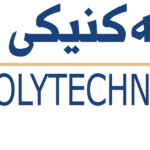- هاورى انور رمضان
- hawre.ramadhan@gmail.com
- 0750 888 5464
- بحث ماجستير هاورى انور رمضان
-
المستخلص:
تهدف الدراسة إلى التعرف على مفهوم قانون الموازنة العامة للدولة، واستعراض مفهوم الرقابة والأجهزة الرقابية للحكومة مثل ديوان الرقابة المالية في إقليم كوردستان - العراق، ومن ثم بيان وتحليل التأثيرات المحتملة لغياب قانون الموازنة العامة على الأداء والعمل الرقابي لديوان الرقابة المالية في الإقليم كوردستان –العراق خلال السنوات التي لم يصدر فيها أي قانون للموازنة العامة، ولغرض الوصول إلى هدف الدراسة فلقد تم تصميم إستمارة استبانة خاصة بهذه الدراسة، وتم توزيعها على المختصين في ديوان الرقابة المالية، ومن ثم تحليلها وعرض نتائج التحليل باستخدام البرنامج الإحصائي الجاهز (SPSS)
وكان من أهم النتائج التي تم التوصل إليها من خلال الجانب التحليلي من الدراسة هو أنه وبالرغم من أن قانون الموازنة العامة لإقليم كوردستان يهدف إلى التأثير على اتجاهات المختصين في الديوان عند وضع الخطط الرقابية وتحسين العمل الرقابي، إلا أن ديوان الرقابة المالية لا يعتمد على ذلك القانون في الوقت الحاضر وهو ما يؤدي بالنتيجة إلى ضعف العمل الرقابي وعدم قدرة الديوان من تقييم أداء الوحدات التابعة لقابة الديوان بشكل كفوء وفاعل.
وكان من توصيات الدراسة هو ضرورة تبني ديوان الرقابة المالية للتعليمات والقواعد والتشريعات الصادرة من قبل الجهات المختصة خلال فترة غياب قانون الموازنة العامة مع ضرورة العمل على التطوير والتحديث المستمر لهذه التعليمات والقواعد وبحسب علاقتها وارتباطها بالجهات الخاضعة للرقابة كأسلوب بديل للرقابة على العمل الرقابي.
- Erbil Technical Administrative College
- تقنيات المحاسبية
- هیوا جواد تەها
- hiwa.barznji89@gmail.com
- 0750 495 6330
- ماستەرنامەی هیوا جواد تەها 2023
-
پوختەی توێژینەوەكە
ئەم توێژینەوەیە هەوڵێكی زانستییە بۆ زانینی سرووشتى گوتاری بازاڕسازیى كۆمپانیاكانى گهیاندنى خێرا لە سۆشیال میدیا له سهردهمى كۆرۆنادا، لەگەڵ دیاریكردنی پەیوەندی نێوان گوتاری بازاڕسازیی كۆمپانیاكانى گهیاندنى خێرا و سرووشتى ئامرازهكانى سۆشیال میدیا لە سەردەمی كۆرۆنا لە هەرێمی كوردستاندا. لەم توێژینەوەیەدا میتۆدی رووپێوی بهكارهێنراوە و توێژەر پشتی بە رێگای شیكردنهوهى ناوهڕۆك بهستووه، سوودیشی لە تیۆری گوتارشیكاری وەرگرتووە بۆ شیكردنەوەی گوتاری بازاڕسازی هەردوو كۆمپانیای گەیاندنی خێرا (دلیڤەری)ـی (تەڵەبات و لەزوو) لە سەردەمی كۆرۆنادا. كۆمەڵگەی ئەم توێژینەوەیە بریتییە لە هەموو سۆشیال میدیای ئەو كۆمپانیایانەی لە بواری گەیاندنی خێرا كە لە هەرێمی كوردستان كاردەكەن، نموونەی توێژینەوەكەش پێكدێت لە سۆشیال میدیای كۆمپانیاكانی (تەڵەبات و لەزوو)، كە ئۆفیسیان لە هەولێری پایتەختی هەرێمی كوردستانی عێراقە، توێژینەوەكە بەو دەرئەنجامە گەیشتووە، كە گرنگترین ئەو بابەتانەی لە گوتاری بازاڕسازی سۆشیال میدیای كۆمپانیاكانی (تەڵەبات و لەزوو) لە هەردوو پلاتفۆڕمی فەیسبووك و ئینستاگرام لە سەردەمی كۆرۆنادا تیشكیان خراوەتە سەر بریتیین لە ناساندنی خزمەتگوزاری كۆمپانیاكان و پەیامی رۆشنبیركردنی جەماوەر، هەروەها گوتاری بازاڕسازیی هەردوو كۆمپانیاش زیاتر كاركردن بووە لەسەر وروژاندنی هەست و سۆزی وەرگر لەپێناو باوەڕپێهێنان و دروستكردنی كاریگەری لەسەریان بە ئامانجی بەدەستهێنانی قازانجی زیاتر.
وشە سەرەكییەكان: گوتار، گوتارشیكاریی، بازاڕسازی، سۆشیال میدیا و كۆرۆنا.
- Erbil Technical Administrative College
- media- بەشی تەكنیكی میدیا
- میدیا
- Ashqi Mohammed Kareem
- ashqi.mohammed@epu.edu.iq
- 0750 443 1335
- Ashqi pdf
-
Hematological malignancies are among the many diseases that exhibit P53 mutations. The main aim of the present study to assess the prevalence of P53 gene mutations among Acute Myeloid Leukemia and Acute Lymphoblastic Leukemia cases. We conducted a comprehensive evaluation using P53 mutational screening through hematological changes, bone marrow aspiration reports, PCR, and gel electrophoresis in the current research to assess the P53 mutation frequencies in AML and ALL patients.
This study evaluated 61 patients of Acute Leukemia referred from Nanakaly Hospital for Blood Diseases and Cancer in Erbil-City, from July 1, 2021, to March 11, 2022. For a total of 61 patients (29 patients with Acute Myeloid Leukemia and 32 patients with Acute Lymphoblastic Leukemia), which had been selected for the study depending on the Complete Remission/Partial Remission association, we compared the CBC parameters, immunophenotyping CDs, and bone marrow reports. Of these, 40 samples (20 from AML and 20 from ALL) were followed up for DNA extraction, PCR amplification and visualized by Gel Electrophoresis.
Overall 61 patients (29 AML patients achieved CR 24(82.7%) and PR 5(17.3%) and (32 ALL patients achieved CR 25(79.3%) and PR 7(20.7%). One of the important findings of our study, the P53 gene was mutated in all of AML and ALL patients. The most frequent positive CDs in AML patients, includes (CD13, CD33, MPO, HLADR, CD64, CD117, CD34), and the mean of them are (75%, 70%, 60%, 60%, 55%, 55% and 50% respectively) , and according to CR/PR association those CDs were statistically showed significant (CD64, CD117, CD13, CD33, CD34, MPO, TdT and CD38,), p-values (<0.0001, <0.0001, 0.0012, 0.0012, 0.0067, 0.0103, 0.0209 and 0.0235 respectively). The most frequent CDs in ALL patients, includes (CD19, CD79a, TdT, HLADR, CD10, CD22 and CD34), the mean of them are (95.24%, 95.24%, 95%, 90%, 85.71%, 80% and 50% respectively), and according to CR/PR association, those CDs markers(CD2, CD10, CD19, CD22, CD34, CD79A and TdT) were statistically showed significant, with p-values (<0.0001, <0.0001, <0.0001, <0.0001, <0.0001, 0.0003 and 0.0124 respectively). The majority of bone marrow aspirates in AML cases during the post-induction stage were primarily hypercellular(100%) in CR group and hypercellular (85%) in PR group, and the p-value depending on CR/PR ratio showed mildly significant for Cellular fragments (0.0068), also the blast percentages were significant. For instances of ALL, the bone marrow aspiration reports were primarily hypercellular(100%) in CR group and hypercellular (45%) in PR group, and the p-value of CR/PR ratio showed strongly significant(<0.0001). The present study identified by Sanger sequencing, 28 mutations from 17 mutated samples(from 20 samples of AML and 20 samples of ALL), which includes, 17 mutations from 10 samples of AML and 11 mutations from 7 samples of ALL.
We conclude that P53 were highly mutated in AML and ALL cases and immunophenotyping CD markers significantly expressed in acute leukemias, also the reports showed the hypercellular bone marrow.
- Erbil Technical Health College
- Medical Laboratory Technology Department
- Hematology
- Amanj Jamal Azeez
- amanj.jamal1981@gmail.com
- 0750 430 4363
- FINAL AMANJ THESIS RECOVERY 99
-
SUMMARY
The current study aimed to investigate the impact of a static magnetic field (SMF) exposure on uropathogenic Escherichia coli colony morphology, cell growth, viability, biochemical characteristics, antibiotic susceptibility and gene expression from urine clinical specimens.
Twenty- five E.coli is being isolated clinical samples obtained from urine of patients attended to different hospitals (Erbil, Rizgary, and Rapareen Teaching Hospital in Erbil city/Iraq. All isolates were identified using cultural, morphological, biochemical characteristics, and the using Vitek 2 system for identification.
The magnetic field created manually with the power of (0.04, 0.08, 0.12, 0.16T) and have been measured the force in the Physics Department of the College of Education at the University of Salahaddin in Erbil/ Iraq. The bacterial culture in broth media exposed to different force of magnetic field.
Our findings revealed that exposure to SMF (0.04, 0.08, 0.12, 0.16T) decreased optical density at 620 nm over the course of 24 hours. Also finding exposed bacteria to different magnetic force been altered bacterial biological activity on sugar fermentation and antibiotic sensitivity due to mutation.
In addition, the Vitek 2 system has been used for measuring the antibiotic susceptibility of bacteria against different magnetic fields. After 24 hours of exposure, the minimum inhibitory concentration (MIC) value was calculated. The antibiotics Ciprofloxacin, Trimethoprim/sulfamethoxazole, Ceftazidime, Cefepime and Aztreonam converted from sensitive to resistant compared with negative control (unexposed).
Escherichia coli isolates were put through a PCR procedure using the appropriate primer 16SrRNA to establish their identity as well as other primers TEM1.CTXM-1 SHV genes that encode for a multidrug-resistant strain MDR.
The interpretation of the differential expression of the TEM1.CTXM-1, SHV, and 16SrRNA genes under different SMF exposure revealed that the expression level of the 16SrRNA amplification PCR product remained constant throughout the exposure and thus can be used as a reference gene for the observation of the differential gene expression of E. coli. Notably, the amplified PCR products of TEM1.CTXM-1, and SHV genes were decreased after different SMF exposure as compared to non-exposed (control) that’s lead to increase antibiotic susceptibility. The TEM1.CTXM-1 genes were subjected to a genomic study; (Bio Edit V.7.0.5) was used to evaluate the quality of their sequencing data. Utilizing NCBI- BLAST, homology, insertions - deletions, stop codons, and frame shifts were investigated. Laboratory or query sequences were examined and aligned with a second biological sequence to identify a greater degree of similarity and nucleotide variation with other targets.
- Erbil Technical Health College
- Medical Laboratory Technology Department
- Microbiology


